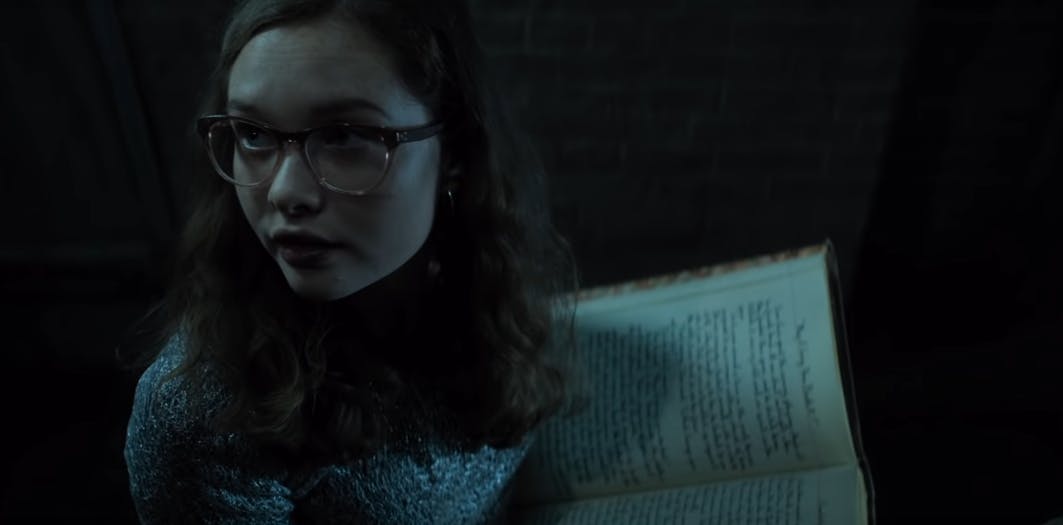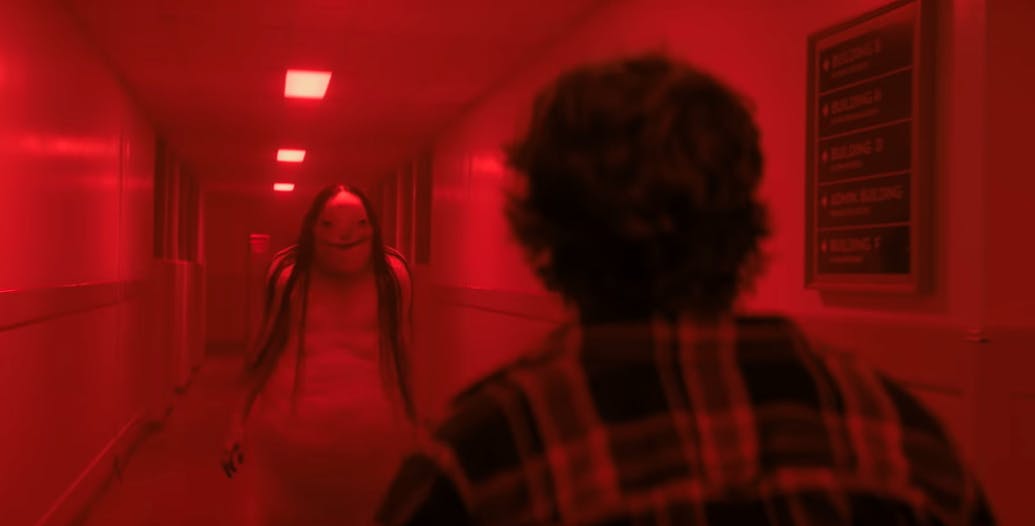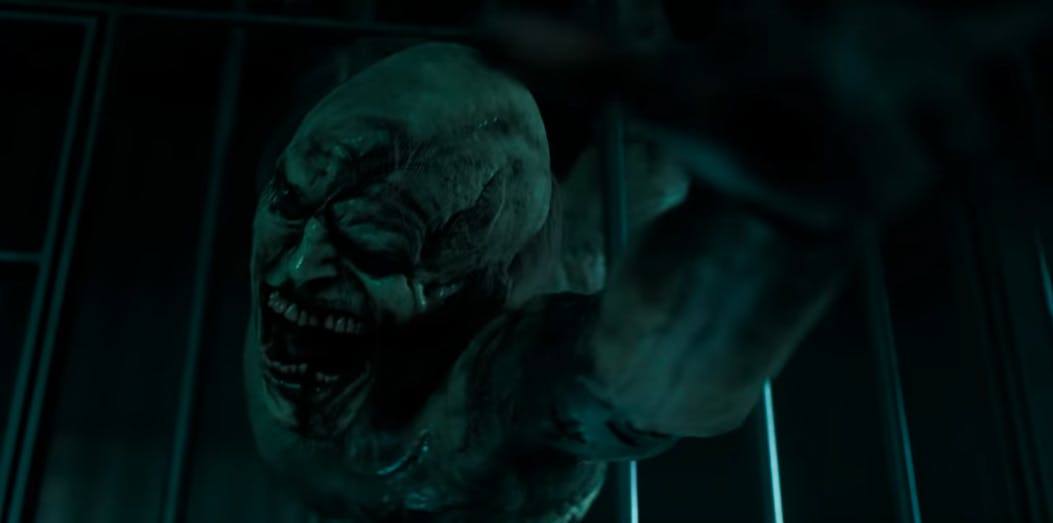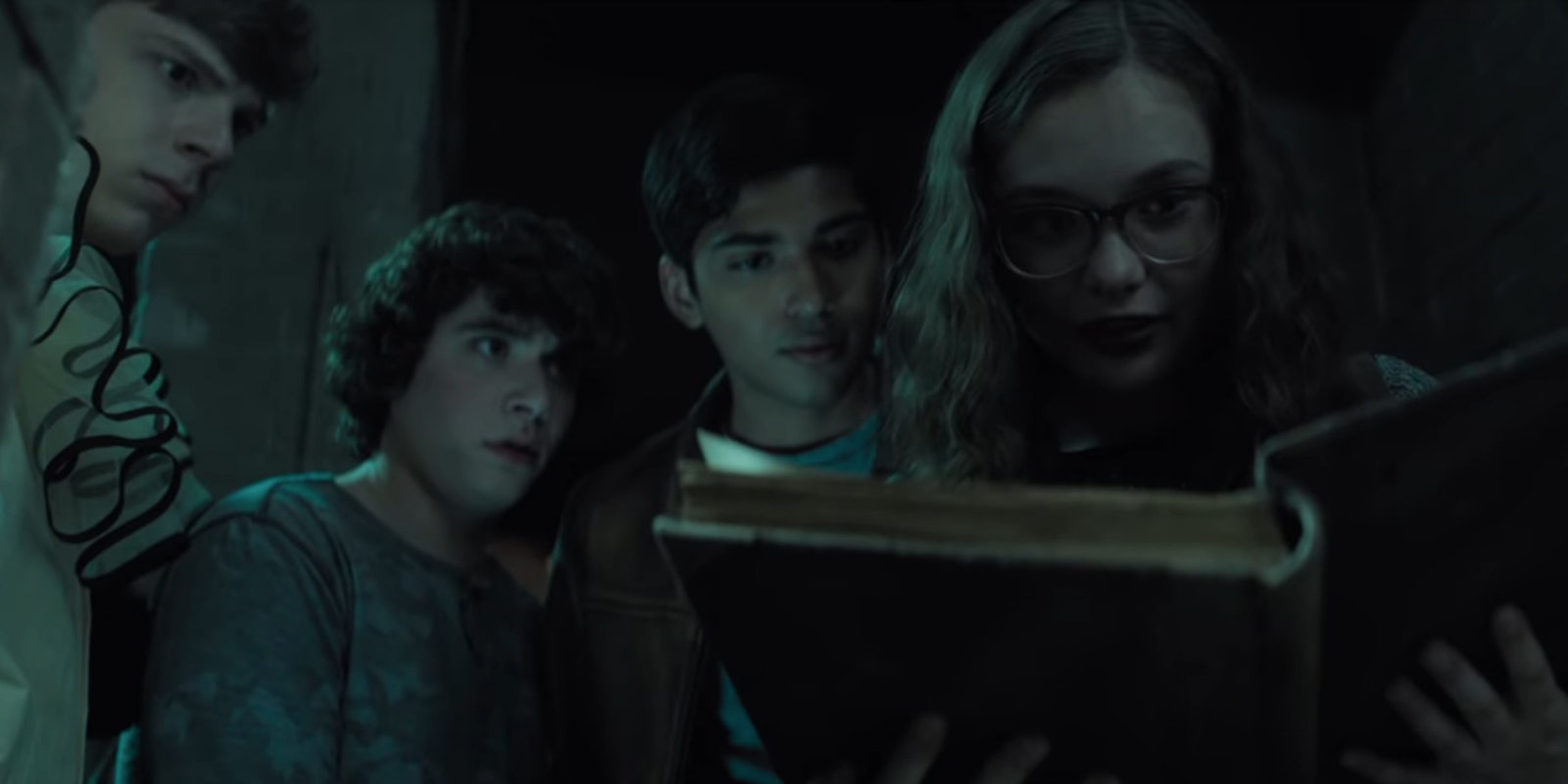I tormented my little sister with Scary Stories to Tell in the Dark. It was just one page, the same illustration that terrified a lot of kids in the ’80s and ’90s: the decaying, black-eyed woman from short story “The Haunted House.” I would crease the book to that page and put it under her pillow when she wasn’t looking, or stage it in other strategic locations around her room.
DIRECTOR: André Øvredal
The film adaptation of the classic horror series gets in some good scares but struggles elsewhere.
It terrified me, too, which made this older-sister power move more complicated. As we got older (and closer), my sister reminded me the prank had stayed with her. Was I the asshole? I felt bad. Looking back at the story—a woman haunts the house where she was murdered—as an adult certainly gives it a different weight. But that illustration is still scary.
“I get it,” she recently told me when I asked about the book. “What fun is having a younger sibling if you can’t mock and exploit their fears?”
Originally written by Alvin Schwartz and illustrated by Stephen Gammell, Scary Stories to Tell in the Dark certainly exploited the fears of a generation with its stark ink portraits and grim fairy tales and urban legends. It was revamped with decidedly less terrifying illustrations in 2011, which was met with dissent. The new movie adaptation, directed by André Øvredal (Trollhunter) and co-written by Guillermo del Toro, tries to put another spin on it.

Set in the fall of 1968 against the backdrop of Vietnam and Richard Nixon’s election, the film’s spectral focus is Sarah Bellows, a young woman who was locked in the basement of her family’s Mill Valley, Pennsylvania, estate in the 1890s and wrote a book of scary stories to tell in the dark. On Halloween night, horror buff Stella (standout Zoe Margaret Colletti) and her equally nerdy pals—plus new arrival Ramon—visit the crumbling house where Sarah was tormented and find her book. They’re also menaced by the town’s one-dimensional jock bullies, who throw racial slurs at Ramon, one of the few non-white people in town.

It’s a lot of stuff you’ve seen in horror before; they literally go into the basement. Six tales from the Scary Stories books are unspooled here, because Sarah’s book, it turns out, “reads you.” That idea is interesting, and perhaps taps into the primal, lingering fear the books instilled, but the film doesn’t do much with it. These are hormonal, conflicted teens! The book should be reading the shit out of them!
Making the book the plot device instead of separating the stories into an anthology format was probably the right choice, but the film gets lost in the other themes it incorporates: budding romance, war, racism, childhood trauma. Maybe it would have worked better set in the present, given its emphasis on how storytelling can shape us—and that books shaped a generation living in the present.

But 1968 is a safer bet and frames it as a more believable ghost story. With a PG-13 rating, it’s obviously aimed at teens, though some of the younger viewers in my screening got audibly scared. The jump scares are satisfying, and Scary Stories makes good use of long stretches of unnerving silence, which the books telegraphed. “The Haunted House” is the final story, but the illustration that terrified us so much isn’t there. It appears in another story, “The Big Toe,” though seeing it rendered on the big screen doesn’t stoke the same fear. That’s OK. This film is for a new generation, with new fears to exploit. But will it stay with them?
READ MORE:


